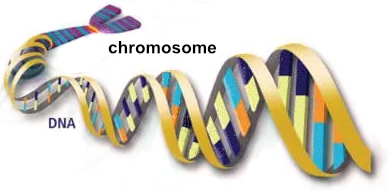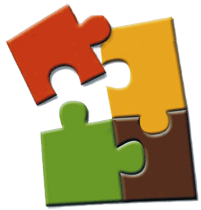|
|
|
|

![]() Genetics is widely used to identify and analyze practically all living and once living things. It is probably best known as a forensic tool used to positively connect certain evidence from a crime scene to a particular person. Genetics is also used in a wide variety of other ways, especially as it's medical implications are better understood. It is also being used with great success and importance in ancestral research with genealogy.
Genetics is widely used to identify and analyze practically all living and once living things. It is probably best known as a forensic tool used to positively connect certain evidence from a crime scene to a particular person. Genetics is also used in a wide variety of other ways, especially as it's medical implications are better understood. It is also being used with great success and importance in ancestral research with genealogy.
Genetics, when used with genealogy, is not the stuff of eye color, physical features or medical information. DNA testing is focused exclusively on information that can show anthropological issues, ancestral homelands and migrations, prove individual connections to other individuals, establish family groupings and ancestral lineages. It is a serious and complicated science, which can be used in various depths and complexity and is completely trusted by the genealogical and scientific community alike. Genetics can be extremely important to personal and family genealogy because it can scientifically prove connections we otherwise might know only from a collection of documents, references and memorabilia, which in some cases might otherwise be considered questionable or incomplete.
Genetics with genealogy is accomplished by testing DNA from living people and comparing those results with results from other living or sometimes deceased people similarly tested. It is from these comparisons that conclusions can be made. These "DNA tests" are now quite common, reasonably affordable and accessible to almost anyone who is willing to participate.
Early genetic testing had an immediate impact on all Jam?sons, everywhere. It quickly proved that there are several genetically different people and families, at least as to ancestral lineages, who use the same Jam?son surname, and not just one or two, but many. Most importantly to any Jam?son family, is that it can establish a family's indisputable Y-DNA profile, from which all other men in this entire universe can be tested for a match, or mismatch.
OUR INTENT and GOALS - SOME SPECIFICS about DNA Testing

![]() There are currently three common types of DNA tests available with respect to genetics and genealogy: autosomal (atDNA), which tests all gender ancestry, mitochondrial DNA (mtDNA), which tests a woman along their direct maternal line' and Y-Chromosome (Y-DNA), which tests a male along his direct paternal line. Any of these tests can be used to some degree with genealogy and for deep anthropological grouping. For our purposes - determining the history, direct paternal ancestry (pedigree) and family groupings, by DNA, of the various and different Jam?sons in the North East area of Scotland - Y-DNA testing is the best use of genetics. The Y-DNA chromosome found in living males is basically, in some parts, identical and is handed down from father to son(s), generation after generation, for thousands of years. It is from this part that Y-DNA is examined and used. Any male Jam?son with a Y-DNA profile that matches any other, can then be considered of that same "DNA family," regardless of who he is, where he is, or how his linage unfolds.
There are currently three common types of DNA tests available with respect to genetics and genealogy: autosomal (atDNA), which tests all gender ancestry, mitochondrial DNA (mtDNA), which tests a woman along their direct maternal line' and Y-Chromosome (Y-DNA), which tests a male along his direct paternal line. Any of these tests can be used to some degree with genealogy and for deep anthropological grouping. For our purposes - determining the history, direct paternal ancestry (pedigree) and family groupings, by DNA, of the various and different Jam?sons in the North East area of Scotland - Y-DNA testing is the best use of genetics. The Y-DNA chromosome found in living males is basically, in some parts, identical and is handed down from father to son(s), generation after generation, for thousands of years. It is from this part that Y-DNA is examined and used. Any male Jam?son with a Y-DNA profile that matches any other, can then be considered of that same "DNA family," regardless of who he is, where he is, or how his linage unfolds.
Our intentions with this project are to Y-DNA test as many people, as possible, from as many of the known different Jam?son families, in the North East area of Scotland, in order to discover and determine which, if any, may be related to each other in ways (earlier unknown ancestry) we cannot, or would not otherwise determine. We are hoping to persuade any direct male descendant (must have the Jam?son surname and a direct unbroken pedigree) who can show his ancestors were from the North East area of Scotland, particularly Aberdeenshire, to participate with this Y-DNA Project. Please contact us about how to coordinate your results, or how to proceed with a test, or even with any other questions you might have about this project.
HOW THIS ALL WORKS
Y-DNA testing results are in two different categories, the "Haplogroup" and the "DYS" profile. These two categories test different parts of the Y-Chromosome, for different reasons, they are interrelated, but report to different periods of one's ancestry. The Haplo part is very old (anthropological) and reveals different periods in time, generally considered as branches within the overall Haplo tree. The "DYS" part of the Y-DNA test is a series of numbers that when taken as a whole, represent a DNA profile, much like a fingerprint, which can then be compared directly with someone else's 'profile' which, like a fingerprint, determines (reveals) a match. It is this last category (DYS profile) that is most often considered useful to relationship genealogy.
![]() - Click here for the Y-DNA Haplogroup details and results
- Click here for the Y-DNA Haplogroup details and results
![]() - Click here for the genetic marker test results (Y-DNA Profile)
- Click here for the genetic marker test results (Y-DNA Profile)

![]() In the last few years DNA testing for use with researching family histories and genealogy, has become widely available, affordable and as such a unique and important toot. There are now several very reputable labs who do this specifically for genealogy as well as groups who have organized for unique family projects.
In the last few years DNA testing for use with researching family histories and genealogy, has become widely available, affordable and as such a unique and important toot. There are now several very reputable labs who do this specifically for genealogy as well as groups who have organized for unique family projects.
We test for the Y Chromosome and use the Family Tree DNA - Genealogy by Genetics, Ltd. company. This type of DNA testing helps us understand and focus on the patriarchal nature and family groupings for our Jam?son families of Aberdeenshire and the North East area of Scotland project.
We urge every Jam?son male descendant (must have the Jam?son surname) to help find your own ancestors with this DNA program. Please contact us if you have any questions, or about how to coordinate your results within our project.
![]() - for information on how to get started.
- for information on how to get started.